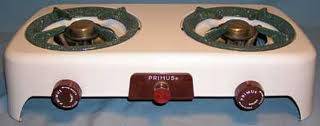This past week we received a rather unique and generous offer. Jon, who attended a 26 day Hurricane Island sailing course, emailed us 31 years after his course to offer up his stove. This wasn’t just any stove. It was an Optimus Primus Kerosene Stove. For those who don’t know, this stove was used for years as the essential kitchen tool for all Outward Bound Sea Program courses.

The humble looking, yet legendary, Optimus Primus Kerosene Stove.
In recent years the Optimus Primus model has been replaced and is no longer in use, so naturally we couldn’t take Jon up on his offer. Caroline, Maine Program Director, replied with a few of her own fond memories regarding these stoves. For those of you who may have had the pleasure of working with these stoves, please enjoy her account, and feel free to leave your own stove memories as a comment below.
“Hi Jon—
I am nearly delighted to say that those Optimus stoves are no longer in use. They were phased out about ten years ago.
I say I’m “nearly” delighted because although those stoves were quirky, temperamental, fragile and often more determined to blacken a pot than heat it, they did have character. Just like the wooden boats whose crews they fed, each one had it’s own particular handling traits— none of them assets, really—and, for the professional Watch Officer, part of teaching a good course was getting along with your stove. It was an element of our tradecraft. Kerosene isn’t a particularly clean burning fuel except when it’s really hot. When it’s not burned hot, it produces a lot of soot that clogs up small openings. When it’s even slightly clogged, it doesn’t burn hot. Additionally, the parts were soft brass and rough handling would wreck jets, valves and needles.
Watch Officers who could keep their stoves performing well were said to have good “stove karma,” and were sought out by others for tips and advice. I remember the first time I performed a significant repair of a non-functioning burner during an expedition. Armed only with wrenches, a few spare parts and a big roll of paper towel, I sat in the cockpit with the stove between my knees in some dark, windy anchorage and patiently cleaned each surface of countless tiny parts, replaced or oiled leathers and gaskets, and gently tapped the soot free from the places I couldn’t access to clean. It was a feat I subsequently had to repeat many times, but the first is memorable because it proved I’d achieved mastery of something that was part of the art of the trade.
When repairing stoves while on Hurricane Island, you had a lot more options. The best way to clean a clogged burner was to remove it from the tank, hold it with a big pair of vice grips in one hand, and aim a blow torch at it with the other. When it was red hot, you’d plunge it into a bucket of cold fresh water, and while some of the water flashed to steam with a soul-satisfying “splub-PHWOOSH!” bits of soot blasted off the burner into the water, literally covering the bottom of a white bucket with black carbon flakes.
Later, as a Course Director, there were countless times when the absolute best thing I could do to support a course was order the instructors off with the students to rock climb, pick mussels, or go for a swim while I walked away with their stove and got it burning confidently again for their next expedition. It felt as warming as handling them a batch of homemade cookies.
So Jon, I honestly don’t think you’ll find any takers, but thanks so much for the memories. I’m glad you got in touch.”
Caroline Blair-Smith
Outward Bound | Maine Program Director
Do you have an Optimus Primus memory? Please share it with us in the comments section below.
OTHER POSTS YOU MAY LIKE
Read More
Read More
Read More




